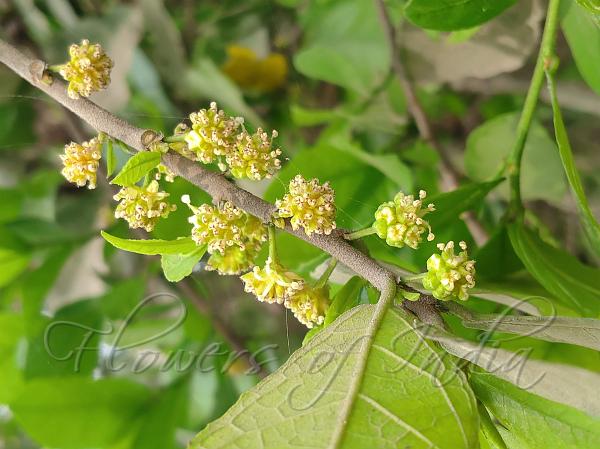|
| Sand Paper Tree |
|

|

|
|
|
|
Photo: |
Botanical name: Streblus asper Family: Moraceae (Mulberry family)
Synonyms: Morus tatarica, Streblus lactescens, Trophis aspera
Synonyms: Morus tatarica, Streblus lactescens, Trophis aspera
Sand Paper Tree is a rigid and densely branched tree growing from 4-10 m
in height. The leaves are oblong-obovate to sub-rhomboid, 4-12 cm long,
very rough on both sides, with finely toothed margin, the tip blunt or
tapering to a point and the base narrowed. The male flowers are in rounded
heads, 4-7 mm in diameter, short peduncled, greenish-yellow, or nearly
white. The female flowers are stalked, usually in pairs, green, the
sepals become larger after flowering, and nearly enclose the fruit.
The fruit is ovoid, 8-10
mm long, pale yellow, the pericarp soft and fleshy. The seed is ovoid, and
5-6 mm long. Thrue to its name, the leaves of Sand Paper Tree are rough
and are utilized for cleaning cooking utensils and as a substitute for
sandpaper.
| Identification credit: Prashant Awale | Photographed in Uttar Pradesh & Maharashtra. |
• Is this flower misidentified? If yes,